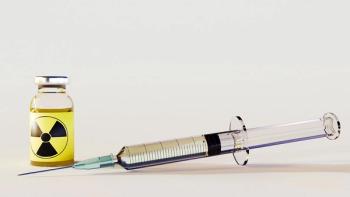
- Pharmaceutical Technology-04-02-2007
- Volume 31
- Issue 4
Expanding Opportunities for Specialty Excipients
China creates a potential outlet for specialty excipients as its pharmaceutical market grows.
The specialty excipient market is a tale of two markets. Growth prospects in the established markets in the United States and Western Europe are moderate, but strong potential is projected for emerging markets such as China as that country's pharmaceutical market and supplier base grows. On a product-development basis, excipient manufacturers are responding to demand by pharmaceutical companies for improved performance and multifunctionality.
Market outlook
The market for specialty excipients used in oral solid-dosage form (OSDF) pharmaceuticals in the United States, Western Europe, and China is nearly $800 million on a value basis and 225,000 metric tons on a volume basis, based on 2005 estimates, according to Kline & Company, Inc. (Little Falls, NJ) (1). Kline classifies specialty excipients as binders and fillers, disintegrants, and lubricants.
On a volume basis, consumption of specialty excipients in the United States and Western Europe is projected to increase at an average annual rate of 2.3% and 2.6%, respectively, through 2010. In China, annual average growth is estimated at roughly 8% (see Figure 1) (1).
Figure 1
"If we look at this business on a global basis, future demands on excipient technology will continue to be driven by drug industry developments such as new production methods, outsourcing, globalization, and reduced timelines to launch new products," said Eric Vogelsbeg, senior vice-president and head of Kline and Company's materials consulting practice, in commenting on its recent study. "At the same time, you have growing demand for excipients in emerging markets and imports of low-cost generic excipients into mature markets. All of these forces need to be considered to formulate an effective strategy for the global market."
In the established markets in the United States and Western Europe, drug companies are turning to excipient suppliers for innovation and technology developments. Driven by advancements in drug delivery and strategies to improve manufacturing economics, excipient suppliers increasingly are seeking multifunctionality and enhanced performance for their products, says Kline and Company (1).
In China, however, the specialty excipients market for OSDF pharmaceuticals is still evolving based on the country's production methods for OSDFpharmaceuticals, a developing position for GMP-certified excipients, and the role of traditional Chinese medicines in the country's pharmaceutical market.
"The current dominance of wet-granulation production techniques in China is a particular hindrance to multinational firms whose product portfolios are more suited to direct compression techniques," said Gillian Morris, industry manager at Kline and Company, in commenting on the study.
Wet granulation accounts for more than 90% of tablet production in China. In contrast, in the United States, wet-granulation is the least-preferred production technology. Instead, direct compression is the preferred production method. Chinese pharmaceutical makers have been slow to adopt the direct- compression method because of an abundance of inexpensive labor, notes the Kline analysis (1).
Figure 2
China's preference for wet granulation drives its specialty excipient product mix toward locally produced starches and other products. Production technology, the nature of the pharmaceutical products, and manufacturing economics are drivers in the various product mixes in the US, European, and Chinese markets for specialty excipients (see Figure 2 and 3) (1).
Figure 3
Diversified supplier base
The supplier base for specialty excipients in China consists of both multinational excipient manufacturers and domestic suppliers. Multinational excipient suppliers tend to focus on multinational pharmaceutical companies and select large, domestic pharmaceutical companies, and local excipient suppliers focus on the local pharmaceutical companies in China, according to the recent Kline analysis (1).
Among the multinational excipient providers, Dow Chemical Company (Midland, MI) is a leading player on a value basis in the supply of cellulosics to China's market. International Specialty Products (ISP, Wayne, NJ) and BASF (Ludwigshafen, Germany) dominate the supply of crosprovidone in China. Croscarmellose sodium supply is dominated by such multinational companies as FMC (Philadelphia, PA), JRSPharma (West Paterson, NY), and DMVInternational (Vegel, Netherlands). Coloron (West Point, PA) is a global supplier of formulated coatings and has a strong presence in China (1).
The growing importance of China in the global exicpient market was underscored by a scheduled conference on excipient control strategies in Beijing in mid-March. The conference was organized by the China Center for Pharmaceutical International Exchange (CCPIE, Beijing), the International Pharmaceutical Excipients Council (IPEC), and China's research and development-based group, the Pharmaceutical Association Committee.
CCPIE is an affiliated organization of China's State Food and Drug Administration (SFDA, Beijing) and promotes nongovernmental international cooperation and exchange. IPEC is the federation of three independent regional industry associations of pharmaceutical excipient manufacturers, headquartered in the United States (IPEC-Americas, Arlington, VA), Europe (IPEC Europe, Leidschendam, Netherlands), and Japan (Japan Pharmaceutical Excipients Council, Tokyo).
Formulation strategies of CMOs
The meeting was designed to provide China-based pharmaceutical manufacturers, excipient producers, SFDA, and pharmacopeial personnel an opportunity to interact with the global counterparts on excipient-control topics. On the agenda was how pharmaceutical excipients are evaluated for safety and controlled for quality in the United States, Europe, and Japan and a sharing of information about how various pharmacopeial systems work when developing monographs and general chapters for excipients among the pharmacopeial systems in the United States, Europe, Japan, and China. Compliance with current good manufacturing practices, third-party auditing, and the possibility of forming an industry-based excipient working group in China also were scheduled topics of discussion.
Product development at work
While local and multinational companies adjust to China's changing position in the global market, excipient manufacturers also must respond to the pharmaceutical industry's ongoing demand for innovation and improved performance.
Improving the bioavailability of poorly soluble drugs is an example, and excipient producers are responding. ISP, for example, expanded production capacity for "Polyplasdone," a polyvinyl-pyrrolidone polymer used as a tablet disintegrant, at its facilities in Texas City, Texas. This second manufacturing site was validated early this year. The capacity increase is driven by increased demand for fast-dissolving oral tablets as well as a need to enhance the solubility of poorly water-soluble actives, says Tim Bee, ISP's senior director of pharmaceuticals and oral care.
The dissolution rate is an important determinant of the bioavailability of a drug, and the interaction of a disintegrant with the active ingredient may promote or slow dissolution. ISP recently conducted a study of the drug- dissolution capability of Polyplasdone, a nonionic superdisintegrant, compared with anionic disintegrants, when formulated in tablets containing cationic active ingredients of varying solubilities. Nonionic disintegrants will not complex with ionic drug actives to retard drug dissolution. Anionic disintegrants such as croscarmellose sodium and sodium starch glycolate can complex with cationic drug actives and slow dissolution.
Company Web sites
The study describes the dissolution testing of several disintegrants and eight cationic drug actives formulated in direct-compression tablets, all prepared using a model formulation. The test disintegrants included Polyplasdone XL Crospovidone, Polyplasone XL-10 Crospovidone superdisintegrants, and the anionic disintegrants sodium starch glycolate and croscarmellose sodium. Polyplasdone XL Crospovidone and Polyplasone XL-10 Crospovidone are synthetic, insoluble, but swellable, cross-linked homopolymers of N-vinyl-2-pyrrolidone that differ only in particle size.
ISP reported that the two disintegrants (Polyplasdone XL Crospovidone, Polyplasone XL-10 Crospovidone) provide fast dissolution not only for freely soluble, cationic drug actives such as chlorpromazine hydrochloride, ranitidine hydrochloride, cetirizine hydrochloride, and venlafaxine hydrochloride, but also for cationic actives with low water solubility such as ciprofloxacin hydrochloride, fexofenadine hydrochloride, terbi-nafine hydrochloride, and clopidogrel bisulfate.
References
1. G. S. Morris and J.Huang, "China Emerges as the Next Frontier for Specialty Excipients," Pharm. Technol. 30 Technology Outlook; APIs, Intermediates, and Formulation supplement, s26–s30 (2006).
Articles in this issue
over 18 years ago
India: the Gateway to Pharmaover 18 years ago
Continuous Processing—Finallyover 18 years ago
USP Chapter Emphasizes Problems With Revision Processover 18 years ago
RFID Moves Forwardover 18 years ago
April 2007over 18 years ago
Indian Pharma Sector: Evolving to Innovationover 18 years ago
Project Managers in the Spotlightover 18 years ago
Acceptable Analytical Practices for Justification of Specificationsover 18 years ago
Labeled a DisasterNewsletter
Get the essential updates shaping the future of pharma manufacturing and compliance—subscribe today to Pharmaceutical Technology and never miss a breakthrough.





